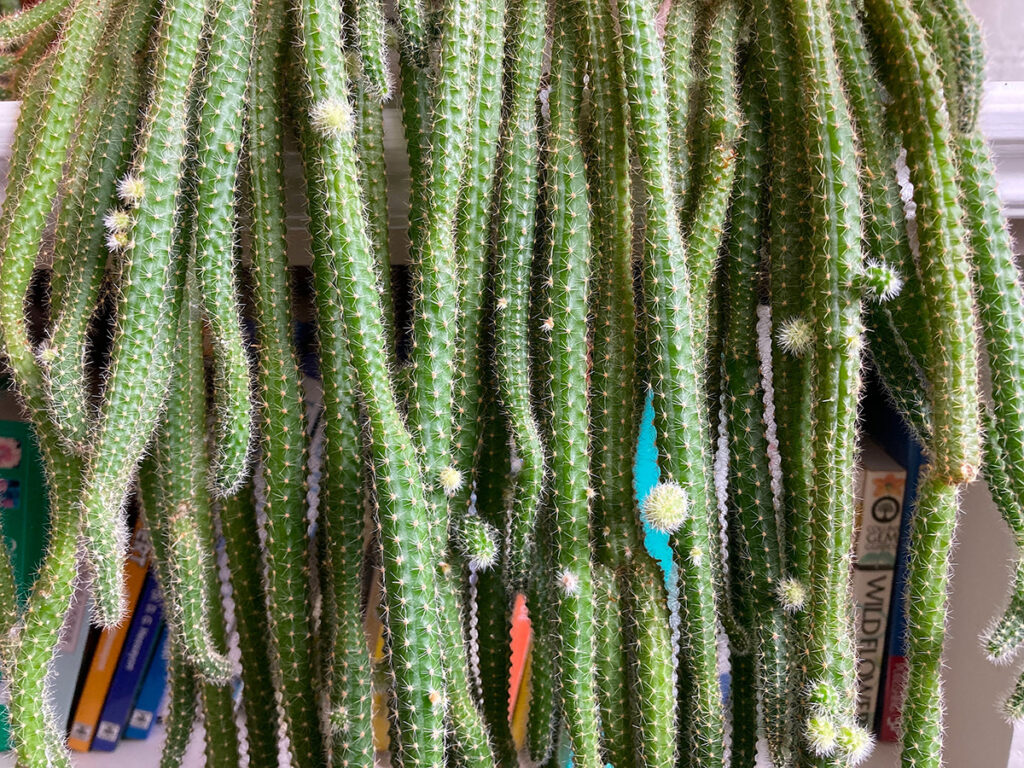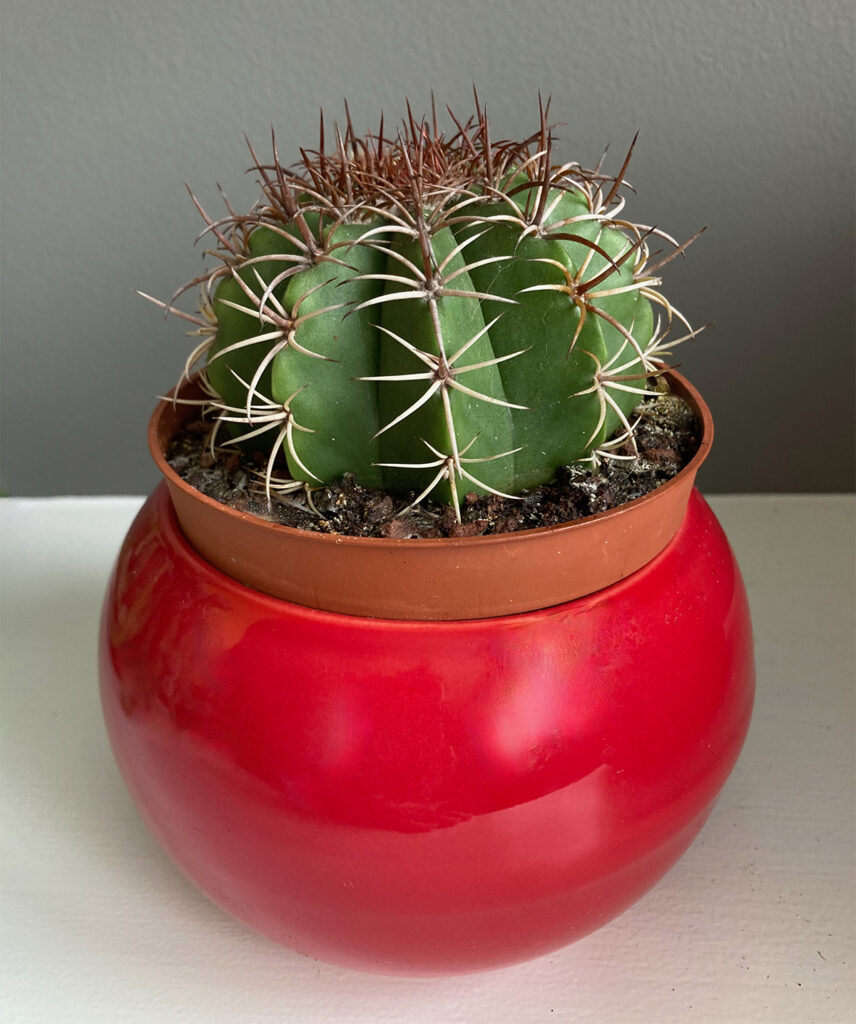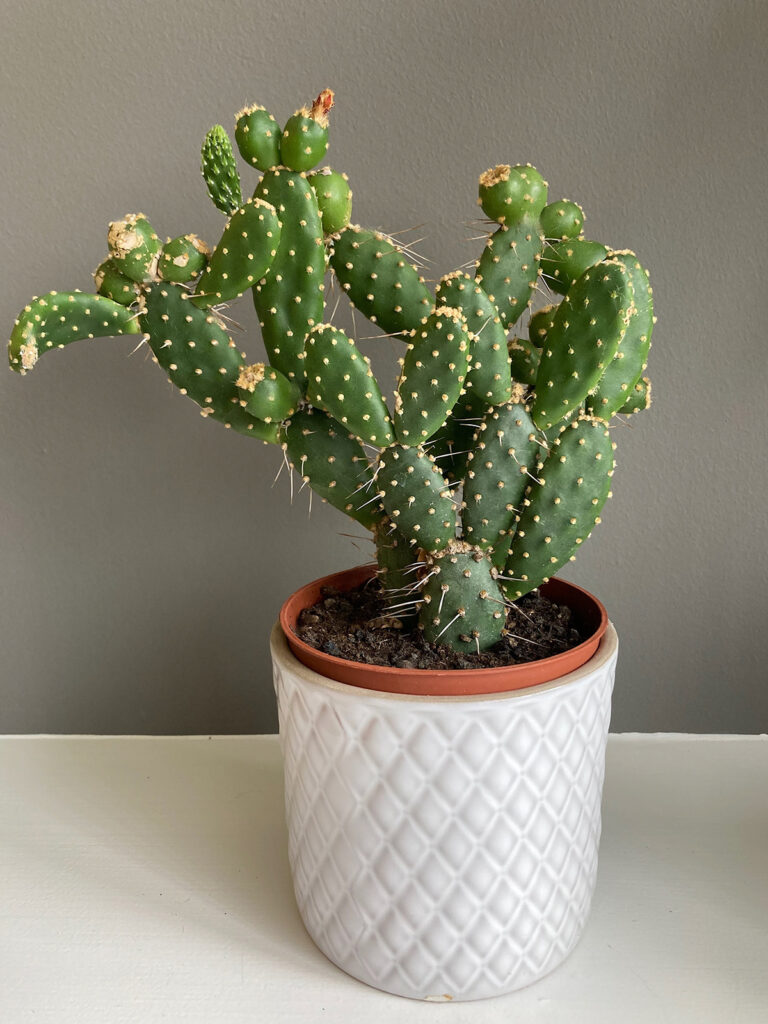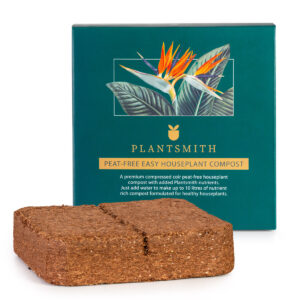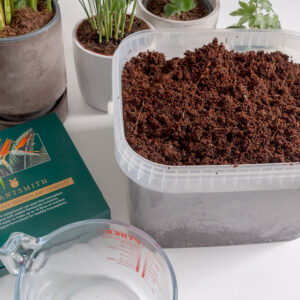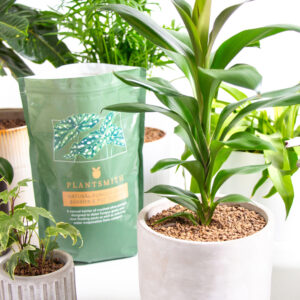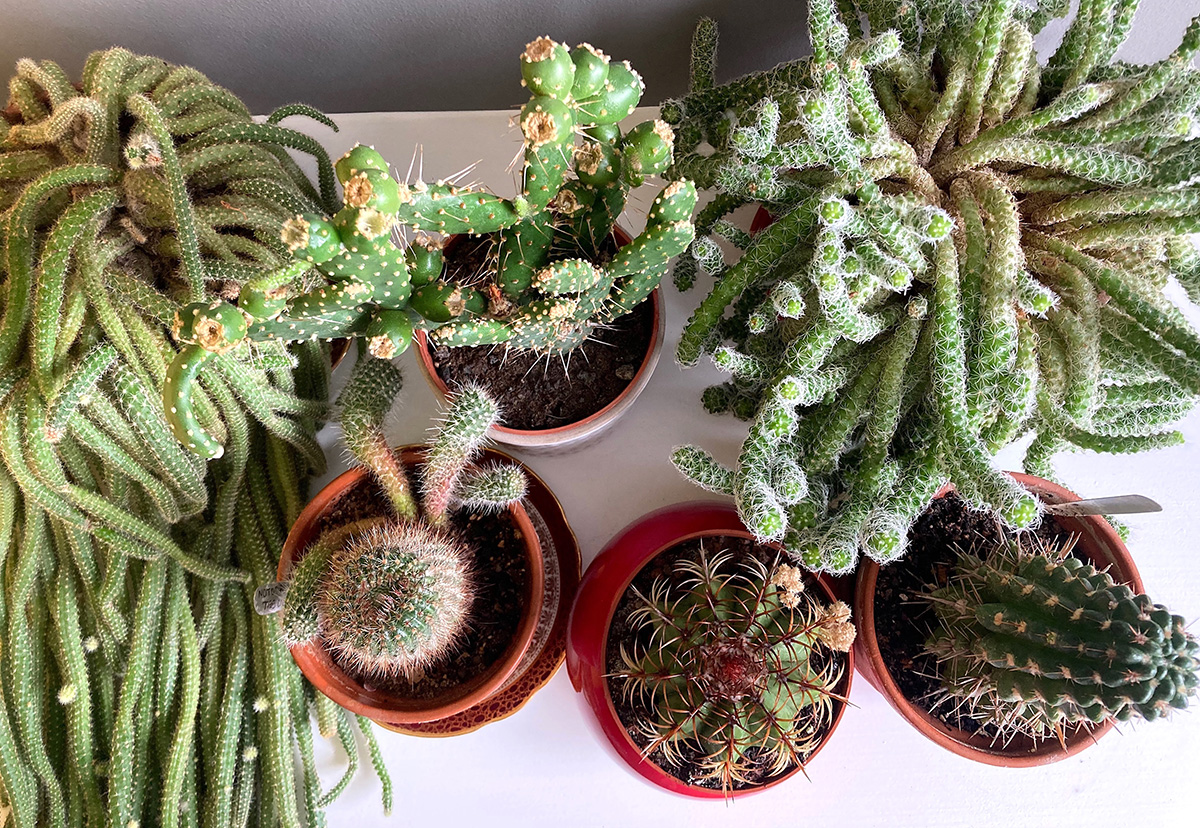There are over 1,750 species of cacti, originating in the Americas from north to south although many are now found also growing naturally in the Mediterranean, Australia, Asia, and South Africa. Cacti retain water in their thick fleshy stems and have replaced leaves with modified spines which protrude from short stems known as areoles, these not only produce beautiful flowers but help reduce water loss and offer protection.
Cacti are ideal houseplants for busy people; perfect for student digs where time to devote to houseplant care maybe limited between studying and partying but you cannot completely ignore cacti. Like all plants in pots they totally rely on us to keep them alive and although they are independent and more than capable of surviving for long periods on their own, here are a few tips to help your cacti flourish.
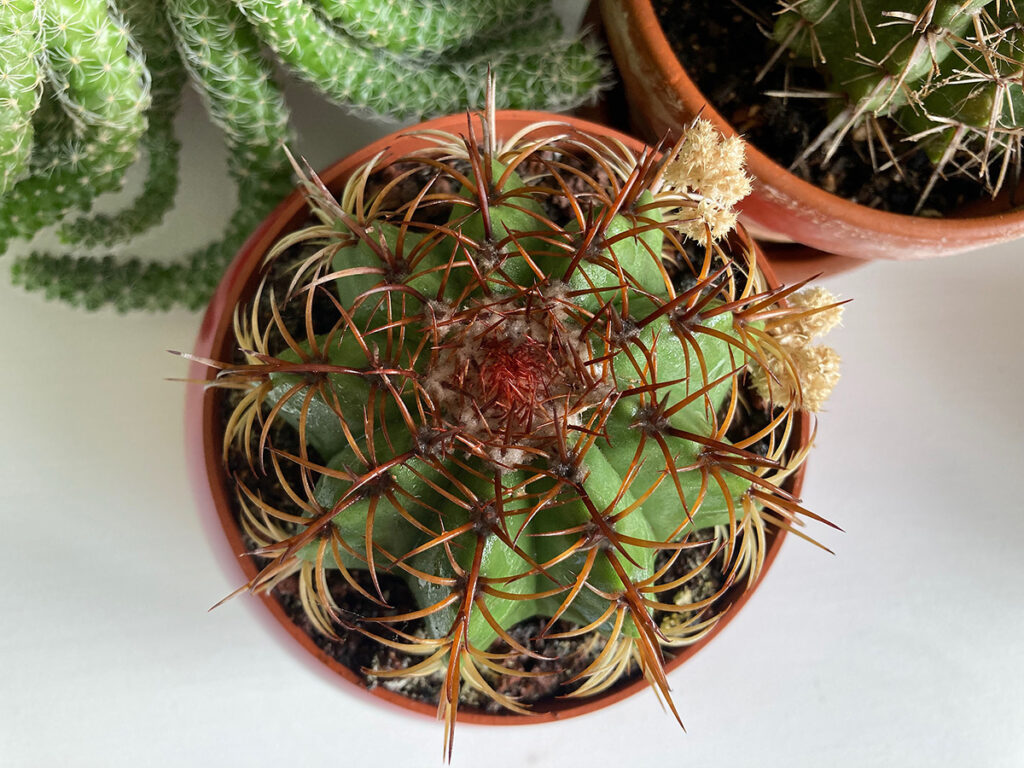
Watering
Cacti have a reputation for basking in intense desert sun and requiring very little water but they still need water to survive. Although cacti store water in their stems, they need hydrating more often than you’d perhaps think. Wait until the soil has dried out then give them a drink of tepid rainwater; roughly every two weeks in the growing season.
Do not mist cacti, they thrive in dry conditions not moist humidity.
Cacti will give you an indication if they are desperate for water, wrinkles appear, particularly at the base of the plant. If you see this, give your cactus a rejuvenating soak and let the water drain away. Frequency of watering will differ depending on the conditions of where your cactus are living, with the amount of light and heat they receive, so a bit of judgement is needed.
Winter months hail the cacti’s dormant period so water very sparsely then. Err on the side of caution and favour under watering rather than overwatering to avoid rotting.
Feed
Plantsmith have developed perfectly balanced 100% vegan and cruelty-free dedicated cacti and succulent feed. This Invigorating Cacti & Succulent Feed comes in 100ml and 500ml recyclable glass bottles and this formula will promote healthy, strong stems and flowers, as well as protecting against disease. Dilute in rainwater and feed every one to two months between March and September.

Light
These sun worshippers need light and lots of it! But surprisingly they will scorch if subjected to too much intense sunlight so if you see them turn yellow or brown change their location, it’s too bright.
Temperature
Situate your cacti in a warm, dry spot, with consistent temperatures and low humidity, away from drafts; 15C°- 26C° (60°- 80°F) is ideal.
Cacti are resilient and can cope with temperatures down to 10C° (50°F) so if you are giving houseplants a holiday this summer and letting them reside outside make sure nighttime temperatures don’t dip and ensure the location is frost-free.
Soil
Free-draining soil is the key, cacti hate sitting in water. You can buy a pre-made cactus mix or make your own by combining peat-free compost with about 50-75% grit and horticultural sand and ensure your container has drainage holes. Improve aeration by adding perlite or pumice, which are mined materials expelled from volcanoes; use sparingly. Cover soil with a thin layer of small stones to retain moisture.
Pests
Although cacti are pretty resilient, watch out for mealy bugs and fungus gnats, both of which are hard to curb once they get a hold but regularly apply Plantsmith’s Bug Control Spray to give cacti a protective boost. If you do find yourself infested, then water in Steinernema feltiae nematodes to the soil as a biological control to tackle fungus gnats and gently scrape off mealy bugs with a blunt knife. Pop some yellow fly papers in the pot too; catching adult fungus gnats will help break their lifecycle.
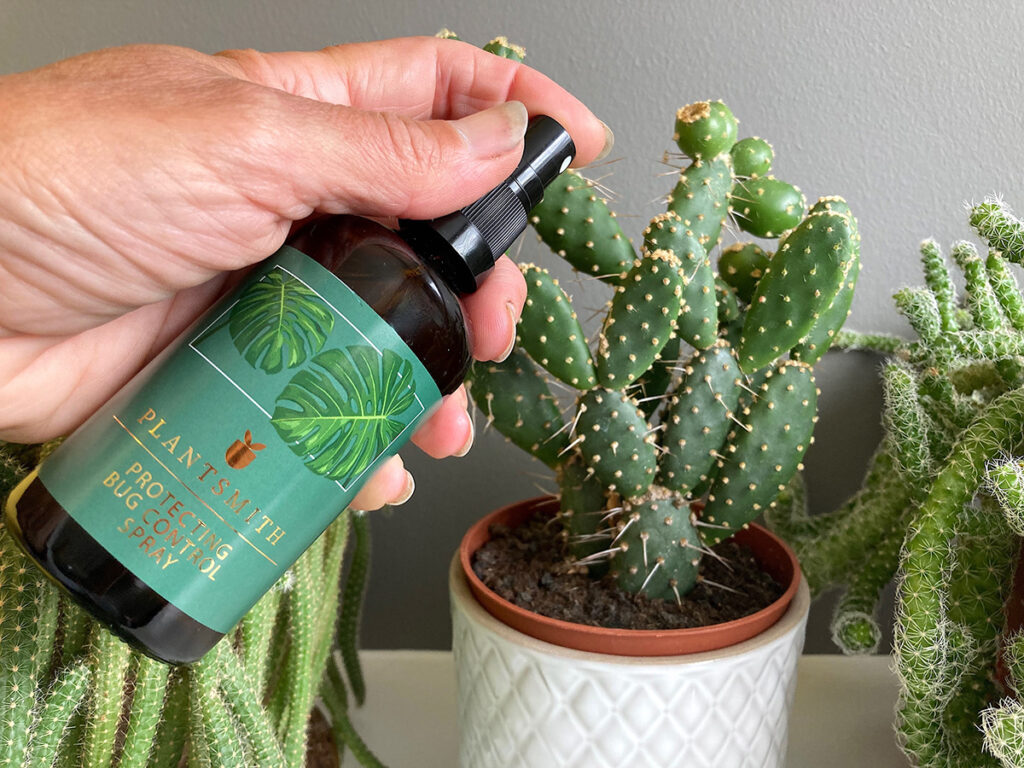
Handling cacti when potting on
Cacti are notoriously prickly and so do yourself a favour and wear thick gloves when you handle them or you’ll spend the next hour plucking spikes out of your fingers. Proceed carefully, even gloves won’t stop all spikes.
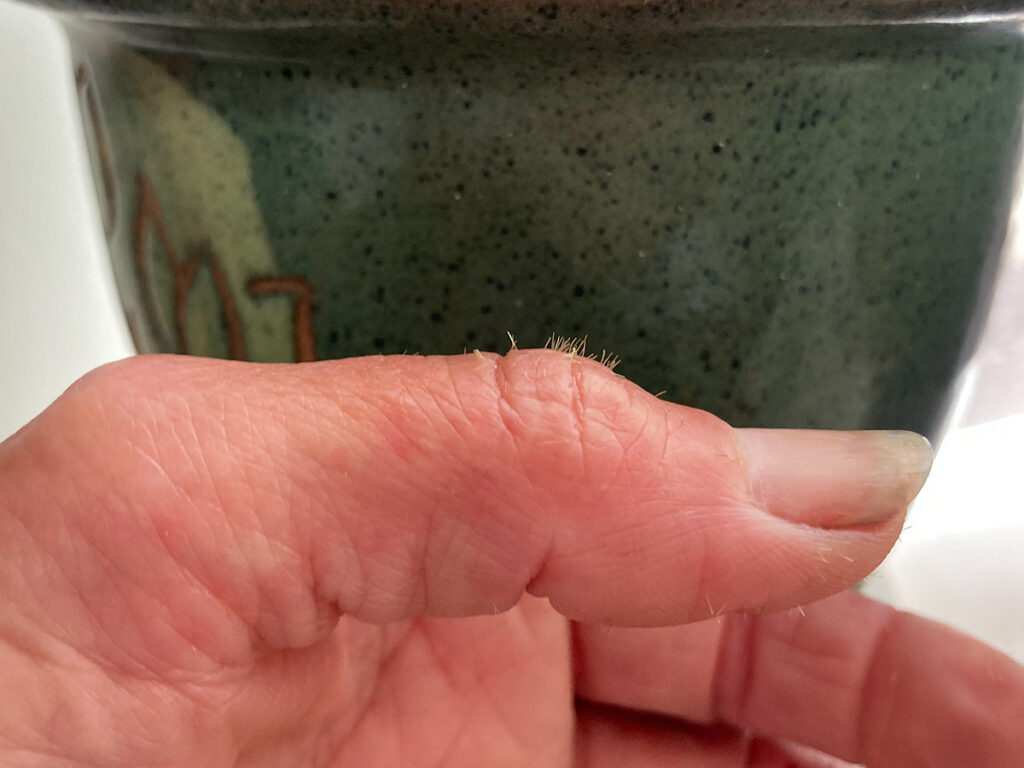
Every two to four years, repot your cactus. Repotting can seem daunting but don your thick gloves and get a tea towel or pair of oven gloves so you can easily lift your cactus without injury and transplant it to its new home in fresh cactus compost.
Propagate
Some cacti are incredibly easy to propagate and roots can be gently teased apart and divided as with many Echinopsis and Mammillaria or with rattail cactus, Aporocactus flagelliformis, carefully pull offsets (pups) from stems and pot on.

Other cacti need a little more skill via leaf or stem cuttings like with Opuntia, Prickly Pear. A pair of tongs are very useful to hold cuttings whilst avoiding painful spikes.
If you are very patient then try growing a cactus from seed.
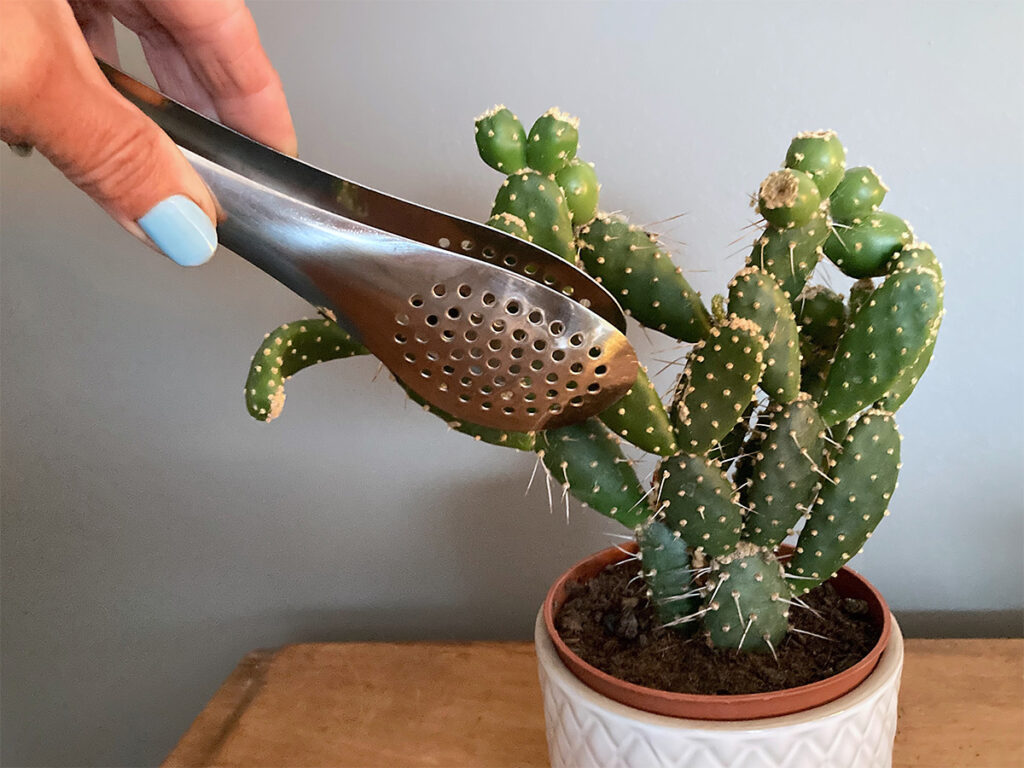
What to grow?
Popular choices for these long-lived houseplants are Mammillaria with over 200 species to choose from, multi-headed Echinopsis, barrel cactus Ferocactus, star-shaped Astrophytum, and the cute bunny eared Opuntia, prickly pear. For a small, colourful, floral genus grow Rebutia or try long, trailing rattail cactus, Aporocactus / Disocactus flagelliformis and dog tail cactus Strophocactus testudo; contrast with the Echinocactus genus, including the very popular golden barrel cactus, Echinocactus grusonii.
With so much choice, it is difficult to not get instantly hooked!
Note: always source your cacti responsibly from reputable sellers.
